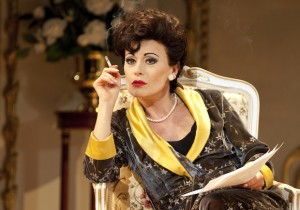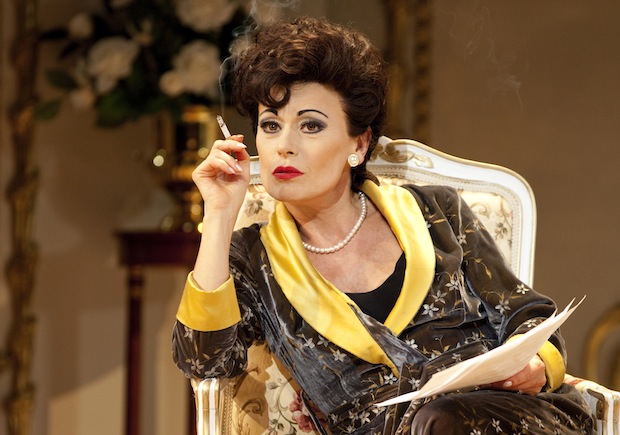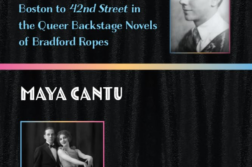The Columnist
Written by David Auburn
Directed by Daniel Sullivan
Samuel J. Friedman Theater, New York April 25 – June 24, 2012
End of the Rainbow
Written by Peter Quilter
Directed by Terry Johnson
Belasco Theatre, New York
DAVID AUBURN’S new play, The Columnist, is a stroll down memory lane for many of us of a certain age. There once was a time when one columnist named Joseph Alsop (1910-1989) was able to manipulate politics and politicians through his syndicated column, which appeared in many hundreds of newspapers. Consummately portrayed by John Lithgow in this production, Alsop was deeply anti-communist—for example, he supported the Vietnam War—while being a staunch New Deal liberal on domestic issues. He was such a Washington insider that JFK stopped by his house after an inaugural ball.
What gives The Columnist much of its dramatic tension is the knowledge that Alsop was a deeply closeted homosexual. The play opens with a bedroom scene of Alsop and a young Russian tour guide cum hustler cum KGB hireling, Andrei, whose photographic evidence of their romantic encounter may prove his undoing.
Alsop (who was related to the Roosevelts) did eventually get married—to a widow with two almost grown children, Susan Mary Patten, who was herself fabulously well-connected. It may have been a mariage blanc, but to outside appearances it was an ideal match—also ideal for their social lives. But Alsop seems to have been unable to offer Susan even the warmth of a good friend. His younger brother Stewart, who endures endless jibes from his older brother for his work at The Saturday Evening Post, is portrayed as warm and loving, a happily married man who won’t stray. Alsop’s tender side is shown in scenes with his stepdaughter, the beautiful Grace Gummer (daughter of Meryl Streep), and even though their stands on foreign policy are diametrically opposed, his love for her is entirely genuine.
The Columnist ends in 1974, after the burial of Stewart Alsop, and the scandal involving the Russian paramour with photographic evidence does come to a resolution. Suffice it to say, Andrei and Alsop both come out as winners.

SET SIX MONTHS before Judy Garland’s death, End of the Rainbow, a West End import, is a play with music rather than a musical. It marks the Broadway debut of Tracie Bennett, who inhabits the role of Judy Garland as she struggled with the addiction to pills and alcohol that would soon be her undoing. If Bennett’s speaking voice sounds just a little like a young Katharine Hepburn’s, it’s immaterial: she’s a wonderful actress, and she’ll have you believing her completely.
The play is set in a suite at the Ritz in London, where Garland was staying while performing at Talk of the Town nightclub, just a few months before her marriage to Mickey Deans. From time to time, the play stops and we’re treated to four of Garland’s standards. Deans would be the last “Mr. Garland.” As the play opens, she’s had so many husbands that she can’t remember which number he’ll be (five). Deans serves variously as Garland’s doormat, as her protector, and (later) as her drug supplier.
If anyone doesn’t know, we’re reminded of how the studio system forced Garland into drug dependency; but also how, despite all the substance abuse, she still has a keen wit and a good sense of humor. There’s no shortage of genuinely funny lines and situations: Garland’s recollection of a uni-browed Deanna Durbin smoking in movie-lot high school, for instance, or feeling like “something is missing” every time she drinks a glass of water.
The third character in the play is Anthony, Garland’s gay pianist, a fictional amalgam of many of the musicians in her life, and so much more than a pianist. Not understanding what she sees in Deans (no one did!), he offers her, in a deeply moving scene, his version of a mariage blanc, full of Platonic love, in a cozy cottage (with a maid) in an English seaside town.
In a coda, Garland’s death in June 1969 is announced, and we all know what happened afterwards. Whether there was any kind of causal link between Judy Garland’s death and the Stonewall Riot can never be answered with confidence. But even if it was just a coincidence, her death and the birth of the modern gay liberation movement will always be linked.






